I'm having problems organising my thoughts about it all and giving any coherence to my blogging. For better or for worse I've decided to focus this entry on the river landscapes we experienced.
The rivers
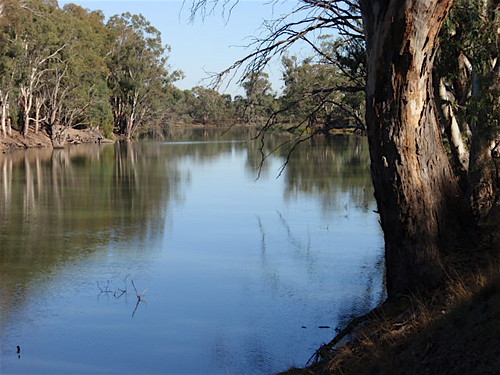
and the river redgums
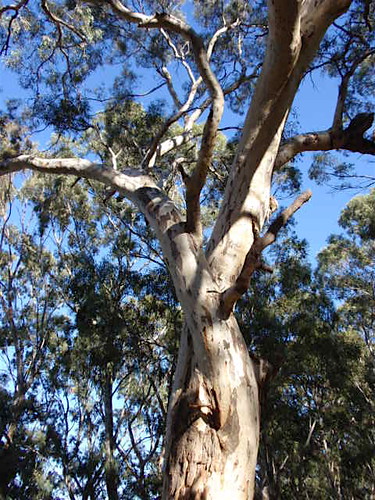
were constant themes in our travels. We met up with the Murrumbidgee at Narrandera, where I had taught for two years in the mid 1960s. [I was astonished at how unfamiliar the town seemed. Even though it's more than 40 years ago, I'm amazed that the physical setting of such a formative period of my life has left so few impressions]. We spent a night at a bed and breakfast place bordering the Murrumbidgee in Hay and had a wonderful morning walk along its banks - where we saw innumerable unidentifiable (to us) small and large birds, parrots of various kinds, black swans, ducks, and kangaroos. It must have been a place of such plenty for the Aboriginal people who lived there before white settlement, with fish and shellfish from the river, fruit and bark from trees and bushes and plentiful wildlife for hunting. Their spirits are still present.
Further on, there was a peaceful walk to the confluence of the Darling and Murray Rivers at Wentworth.
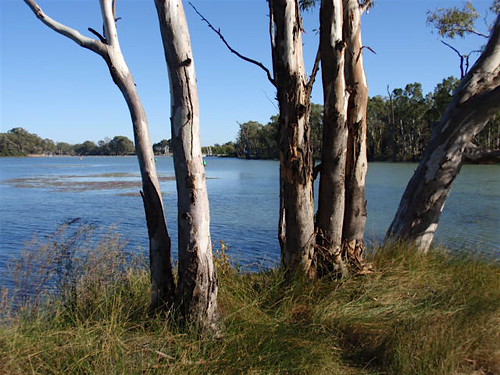
Both rivers are full and majestic, though by this point they are so filtered through weirs that it's difficult to judge what the 'natural' level of the rivers is. Just knowing you are at the meeting of these two long and significant rivers gives a thrill (or perhaps my friend Jan and I are still victims of our deeply embedded 1950s primary school social studies curriculum).
Travelling back eastwards along the Murray it seemed tamed by weirs and locks and irrigation needs. At Mildura we saw our first paddle steamer negotiating a lock on the Murray
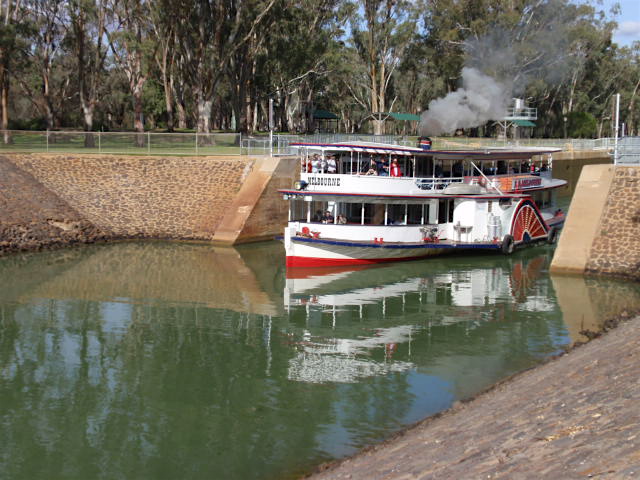
and at Echuca the river was dominated (in the most picturesque way) by its significant role as a late nineteenth century river port. Now, of course, the riverboats are a tourist attraction only, but they are tangible evidence of their brief period of glory in Australia's agricultural and transportation history.
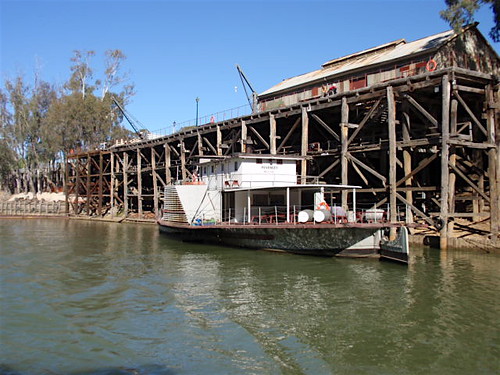
At Rutherglen, our final contact with the rivers, the role the Murray and its tributaries play in enabling irrigation for farming - and most particularly vinyards and their pleasures - was evident.
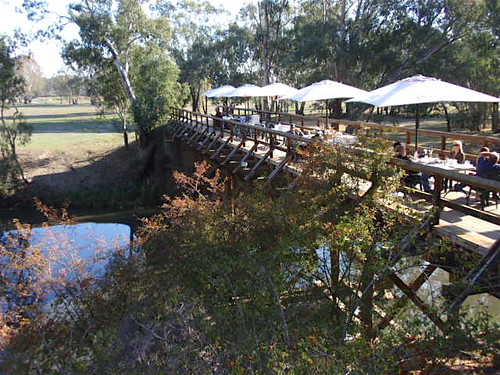
Very beautiful and seductive, but the sense of Aboriginal habitation of the land was, rather sadly, much more tenuous.
And a knitting footnote... Jane was most perceptive with her comment that you never complete as much knitting on holidays as you anticipate. I did take the materials for the hat and finished it. The grey kimono jacket knitting is still unfinished, though I made significant progress. The Personal Sock Club socks weren't even removed from their project bag. Hmmm.
4 comments:
Great post Lyn - fabulous photos and I love your observations. And now I want to go there!!
Oh this is so beautiful. You know what? I'm sending a link to my husband to say LOOK! We should also go here, as well as Tasmania.
I can't help but look at those photos and think of All The Rivers Run.
How glorious.
fantastic post, i love the theme approach. looking forward to seeing the rest of your adventures!
Lovely photos - thanks for sharing. It's been many years since I was in that part of the country!
Post a Comment